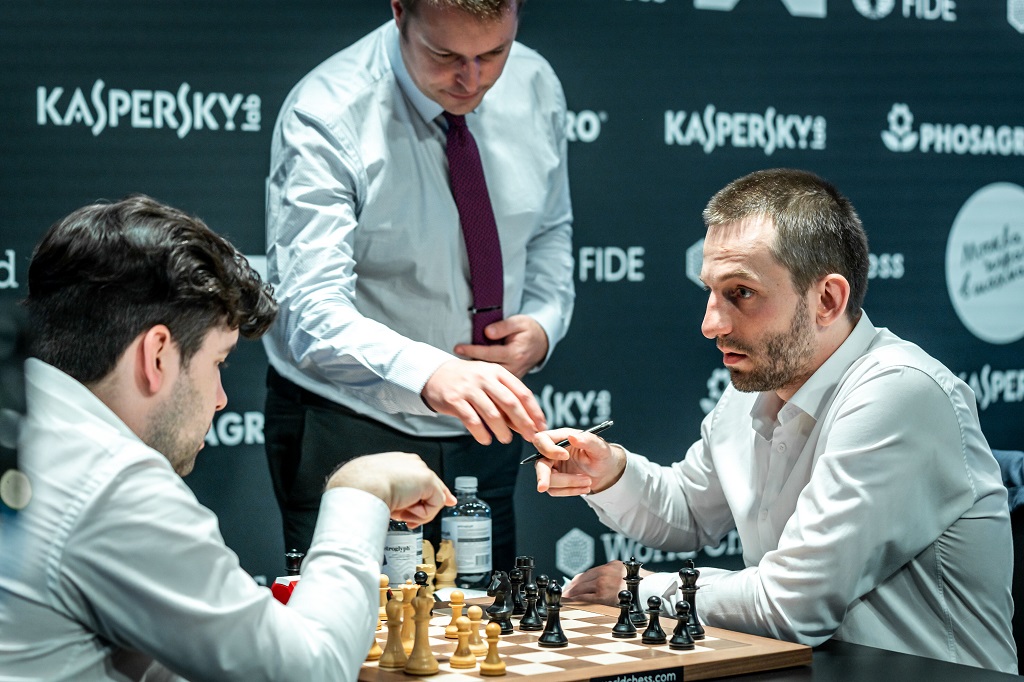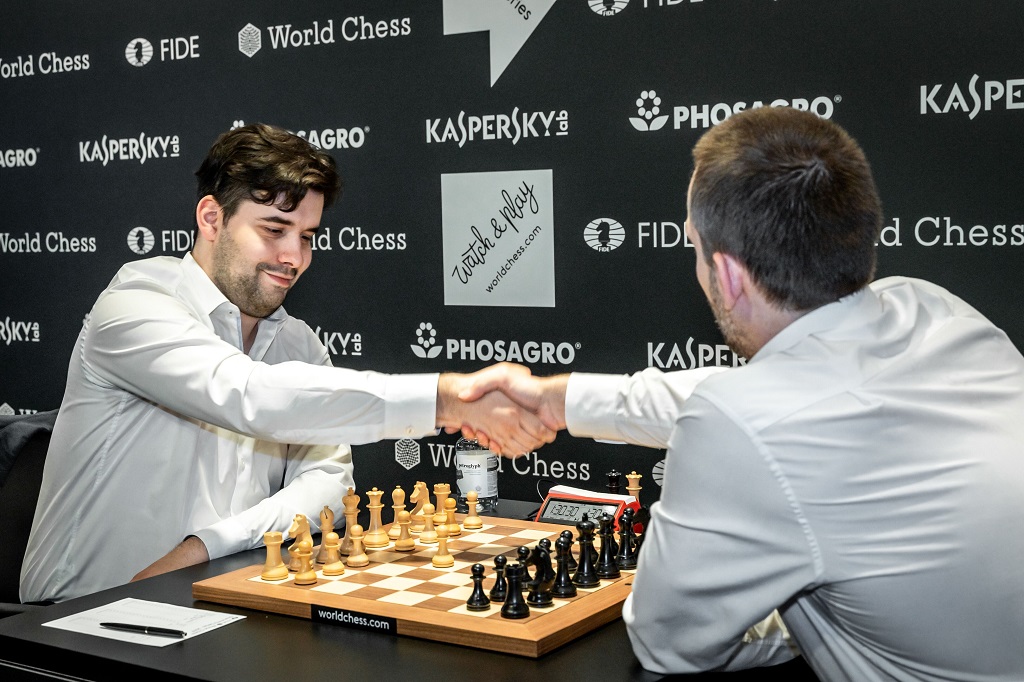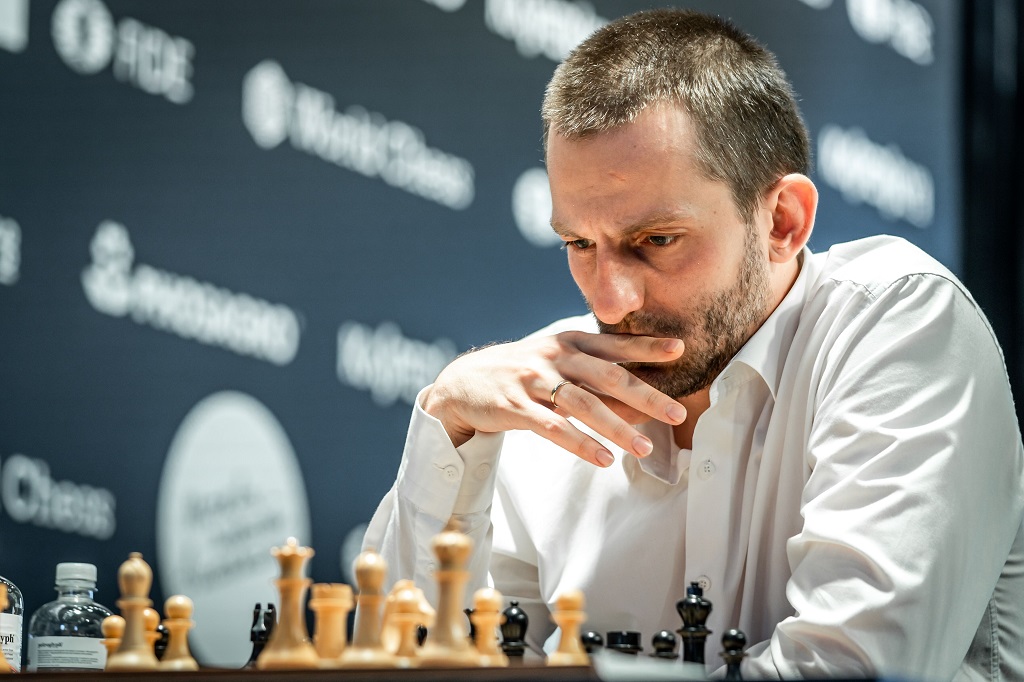


The second classical game of the final match at the Moscow Grand Prix final was a short affair. Without the obligation to show a triple repetition or play a minimum amount of moves (two of the most widely used regulations to avoid short draws), the contenders simply agreed to split the point after 23 moves. As sometimes happens in knock-out events, the players probably estimated that their Expected Value would increase by avoiding risks during the classical phase of the match. It stills remains to be seen whether this will change in the final legs of the GP, when the overall standings will play a big role in the decision-making process of each participant — after all, the main motivation is to get a ticket to the Candidates Tournament.

Ian Nepomniachtchi had white in game two | Photo: Niki Riga / World Chess
The players explored the fashionable 5.♖e1 variation of the Berlin Defence (played at least twenty times in official tournaments only during this month) and repeated a line that was seen for the last time in Wijk aan Zee, when Vladimir Kramnik defeated Vladimir Fedoseev with the black pieces. The first one to deviate was Nepomniachtchi, who chose to expand on the queenside instead of defending his central pawn:
Nepomniachtchi's 12.a4 differed from Fedoseev's 12.c3. Fedoseev played a4 later in the game, while Nepo kept his c-pawn on its initial square until the end of the game, thus laying out a struggle of a completely different nature.
However, only future struggles with this setup will shed light on the appraisal of this particular line, as, after some simplifications, the players stopped the clocks and signed their score sheets with a half point allocated for each of them. This was the final position:
Black's best alternative is to exchange the queens and the pawn structures are symmetrical — apparently, all the risk-taking will be seen on the tie-break rounds...

Alexander Grischuk is a three-time World Blitz Champion | Photo: Niki Riga / World Chess
Afterwards, Eteri Kublshvili spoke with the players, with Ian Nepomniachtchi explaining:
I think it was very complex, because when someone plays the Berlin it's very difficult to refute this line. [...] Okay, there are some complex positions despite the symmetrical structure, but somehow the computer doesn't like these b3-a4-a5 moves — I don't know why, so probably there is a better [version] of this position.
Alexander Grischuk, on the other hand, felt he fared better than in game one:
Today was better than yesterday, but still not fantastic. [...] At least I got some counterplay, as I said, and I almost took over the initiative — I don't know, in the end maybe I should play on, but I was not sure about 23...♛e2 24.♖xe2 ♚f8 and now 25.c3 ♜e8 26.♖d2; my rook gets to b1, but what happens next I was not sure.
So the champion will be decided Wednesday on tie-breaks, with the following rules: best-of-two matches will take place while the tie is unbroken — first with a time control of 25'+10'', then 10'+10'', and finally 5'+3''. If a winner has not emerged, the players will go to an Armageddon game, with 5 minutes for White and 4 minutes for Black (a 2-second increment will be used from move 61), with Black having draw odds.

Two top Russian players fighting for first place | Photo: Niki Riga / World Chess
Commentary by GMs Evgeny Miroshnichenko and Daniil Yuffa